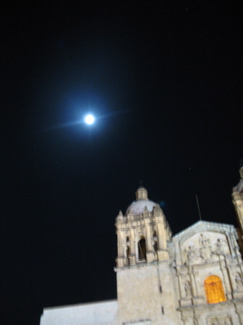The Pursuer (who may be the artist who pursues transcendence or the jackals who pursue the artist) explores the gap between jazz musician Johnny Carter and his parasitic entourage, especially the narrator Bruno V, author of the definitive work on Johnny’s music. The novel sets Johnny’s search for the transcendent in opposition to Bruno’s reductive appropriation of Johnny’s work to tame his art and advance Bruno’s academic career. Bruno narrates with disdain for Johnny as a person and for African Americans in general. When Johnny wants to give up jazz for Mexico, wealthy patron and hanger-on Tica causes his death (my interpretation, strongly implied though not explicitly stated, p.55).
That the parasites are not simply greedy hangers-on but actively damaging Johnny Cortázar implies via references to Dylan Thomas, a book of whose poetry Johnny has annotated, especially “The Mask” quoted twice (p. 1, p. 55). The implication that Tica caused his death is in this vein. The setup of the novel, however, suggests to me a narrative polemic against Theodor Adorno’s, writings on jazz (esp 1933, 36, hence available to Cortázar well before he wrote The Pursuer), which claim that jazz does not partake in “progressive art” but is part of “the culture industry”. Adorno traces the origins of jazz to “Turkey in the Straw” and “Old Zip Coon” – USA folk tunes. Cortázar includes several references to straws and one to turkey when Johnny, speaking about his search for the divine and transcendence in his art (p. 51) berates Bruno. Johnny points out straws on the River Seine and mentions “Lan and the girls are waiting for you with a turkey in the oven” (p.51. I refer only to the English translation, don’t know what word Cortázar has for straw here.) Let me say as a film artist, a student of classical music and admirer of Schoenberg and Berg myself, I have even more disdain for Adorno’s patronizing Eurocentric essay than Bruno has for Johnny. Cortázar, assuming he is responding to Adorno, recasts Adorno’s categories to show the culture industry and hangers-on led by a German intellectual to be jackals bringing down the jazz artist and eventually consuming him by appropriating his work (the incident re: Amorous is illustrative).
Johnny confronts Bruno for attributing to him a concept of God foreign to Johnny’s actual belief (p. 49) and much can be said about the religious imagery especially quotations from Revelations (8:11 star called wormwood; 11:8 bodies lie unburied in the streets). The urns, however, is the image I liked the most in The Pursuer because of how Cortázar fully exploits it. I think Cortázar may be using the image of whitewashed sepulcher (Matt 23:27) from the woes against the scribes and Pharisees (Matt 23) – “woe to you, scribes and Pharisees, hypocrites! For you are like whitewashed tombs, which on the outside look beautiful but inside they are full of the bones of the dead and of all kinds of filth. I love his use of the urns
Subscribe to:
Post Comments (Atom)

It is quite possible that Cortazar knew Adorno and, if he did, as a die hard jazz fan, obviously objected to his comments. You obviously have found much in the story, actually more than most critics. I don't think the Dylan Thomas references have been fully analyzed.
ReplyDeleteI would also add that Johnny is a composite of Charlie Parker, to whom the story is dedicated,
and Bud Powell, who led a similar life in Paris